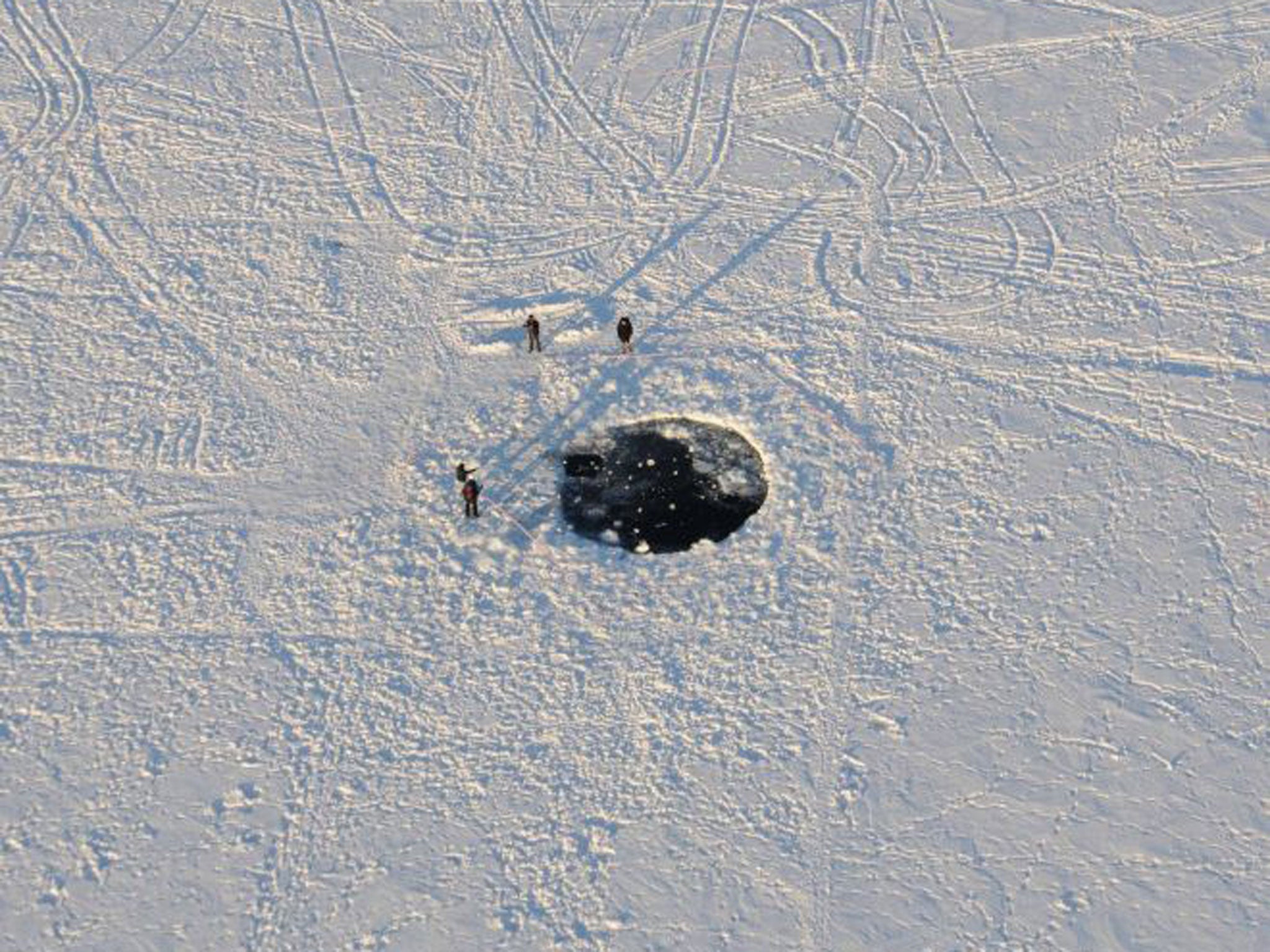'A warning for Earth': Meteor blast over Siberia was equivalent to 30 Hiroshima bombs
People directly under its flight were knocked off their feet and many others suffered sunburn or eye damage as they looked at the intense fireball

The meteor that exploded over the Siberian city of Chelyabinsk in February released more than 30 times the explosive energy of the Hiroshima bomb, a study has found.
Scientists calculated that the blast caused by the disintegration of the space rock as it ploughed through the atmosphere at 19 kilometres per second was equivalent to between 500,000 and 600,000 tons of TNT – compared with the 16,000-ton explosion at Hiroshima in 1945.
People directly under the flight of the meteor were knocked off their feet and many others suffered sunburn or eye damage as they looked at the intense fireball.
It was the biggest meteor blast since the devastating explosion over Tunguska, also in Siberia, in 1908, which flattened forests for hundreds of miles around and was reckoned to have released energy equivalent to between 5 million and 15 million tons of TNT.
The Chelyabinsk meteorite – the part of the meteor that fell to Earth – belongs to the most common class of space rock, known as ordinary chondrites. It is these that are most likely to cause a meteorite catastrophe, said Professor Qing-Zhu Yin of the University of California, Davis.
“If humanity does not want to go the way of the dinosaurs, we need to study an event like this in detail. Chelyabinsk serves as a unique calibration point for high-energy meteorite impact events for our future studies,” Professor Yin said.
Two independent studies, published in the journals Nature and Science, agree closely on the strength of the explosive force as the meteor disintegrated south of Chelyabinsk, punching an eight-metre wide hole in frozen surface of a lake.
Calculations suggest that the meteor broke into smaller pieces at altitudes of 45km and then 30km, preventing more serious injuries and damage on the ground. Even so, windows were shattered for miles around, the scientists said.
“Our goal was to understand all circumstances that resulted in the damaging shock wave,” said Peter Jenniskens, of Nasa, one of dozens of researchers who took part in the studies.
Olga Popova of the Russian Academy of Sciences in Moscow, who led one of the studies, said: “Our [meteor] entry modelling showed that the impact was caused by a 20-metre chunk of rock that fragmented at 30km.” At that point the space rock glowed brighter than the Sun.
The shockwave damaged buildings up to 50 miles either side of the meteor’s east-west trajectory. The largest remains of the meteorite were eventually recovered from the bed of the lake.
Tests showed that it was about 4,567m years old – about the same age as the Earth.
Join our commenting forum
Join thought-provoking conversations, follow other Independent readers and see their replies
Comments
Bookmark popover
Removed from bookmarks